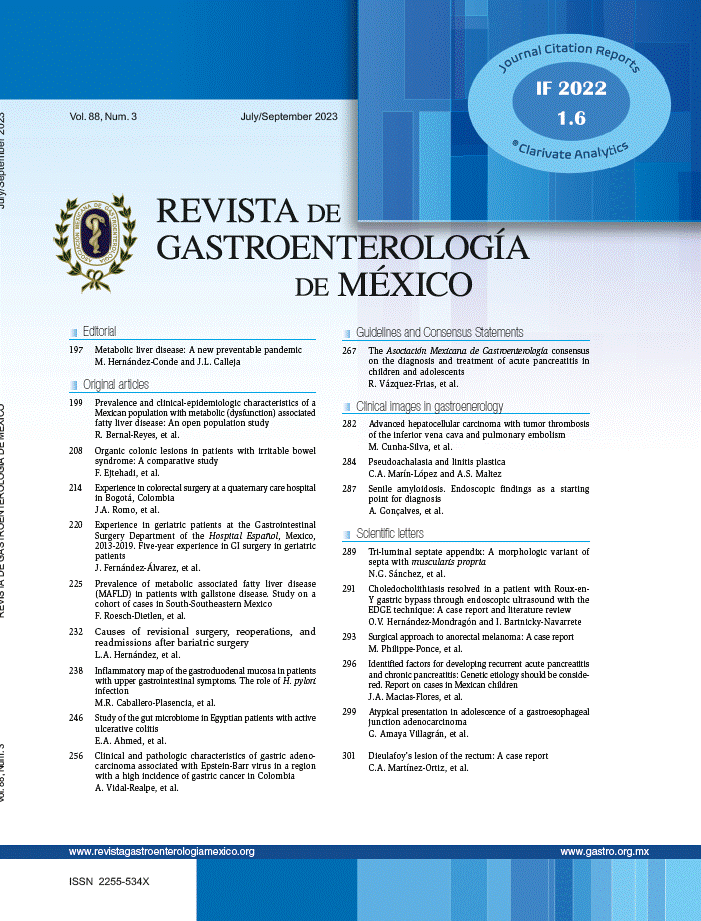We have reviewed the article, “Pancreatic steatosis: A frequent finding in a Chilean population”,1 and would like to make a few observations.
The title encompasses the Chilean population very generally, given that 203 patients were selected from a single hospital over a 2-month period (April-May 2015) and mentions no other recent Chilean studies. The use of the term “Chilean population” is thus incorrect when the study population corresponds to a single hospital in Chile. We suggest a more precise title could have been, “Adult patients with pancreatic steatosis at the Hospital Clínico Universidad de Chile seen during April and May of 2015”.
Regarding the Introduction and Aims section, determining the prevalence of pancreatic steatosis (PS) in adult patients that had abdominal and pelvic computed axial tomography scans was stated to be the primary aim, but in the Discussion and Conclusion, said aim changed to studying the frequency of PS, creating confusion for the reader. For the purpose of clarifying the two terms, according to the Pan American Health Organization (PAHO),2 frequency is described as follows: “in epidemiology it refers to the appearance of a disease or other attribute or event in a population, without distinguishing between incidence and prevalence” and prevalence is described as “the number of persons that have a disease at a specific period of time”, and so the two words represent different concepts.
In the Methodology section, the authors utilize age under 15 years as an exclusion criterion, considering only patients above 15 years of age in their study. Currently, the law in Chile3 dictates that persons above 18 years of age are legally considered adults, resulting in a discrepancy in the age of adulthood considered in the study.
Another point to discuss is the lack of specification in some of the variables presented. By emphasizing the correlation between BMI and PS, a more complete classification should have been utilized, describing the obesity grades. According to the study by Sahuquillo et al.4 that included 100 patients, 71% presented with obesity (33% with grade 1, 29% with grade 2, and 9% with grade 3). The higher the obesity grade, the greater the fat infiltration and inflammation in the pancreas were, which can lead to higher insulin resistance and a consequently greater risk for negatively impacted patient health.
Lastly, in the Results section, the participation of 96 women (47%) is indicated in the study, but the numbers are inverted in Table 1, describing 107 women and 96 men. This typing error is confusing to the reader, with respect to the correct number of men and women included in the study.
Financial disclosureNo financial support was received in relation to this article.
Conflict of interestThe authors declare that there is no conflict of interest.



